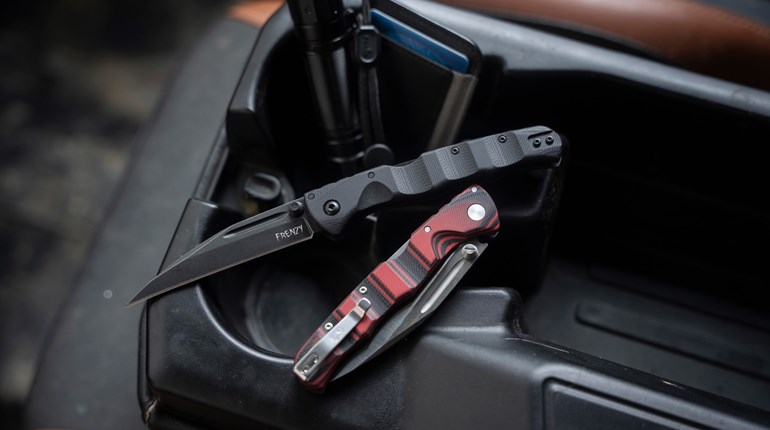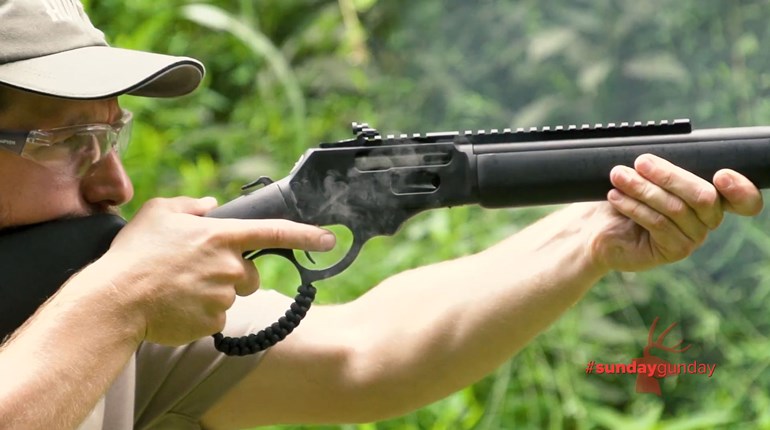
We spend a healthy portion of our lives at work, and the harsh reality is, bad things can happen to us at work just as easily as they can happen to us in our own homes. It’s important to take the time and develop a plan for when something really bad happens inside your home, but are you prepared for when bad things happen while you’re at work?
I live and work in Southwest Florida, so I’m very familiar with what it takes to prepare for a hurricane. What I wasn’t prepared for, though, was an F1 tornado touching down and tearing up a neighborhood mere miles from where I work. I carry a first-aid kit and other supplies with me in my car, but when we received the tornado warning, I had to scurry to a safer location right away...with no chance to run to my car. As far as I was concerned, all that gear in my car could have been located on the moon for all the good it did me when I needed it most.
As a response, I built up a small, unobtrusive kit I keep at my desk that helps to mitigate damage to myself and my co-workers, no matter if the damage was caused by a natural disaster such as a tornado or a man-made disaster such as an active shooter or industrial accident. For me, creating a gear bag for any survival/prepping situation is always about prioritizing what’s needed to stay alive and how soon help might arrive, and for that, I use the outdoor survival “Rules Of 3” as my guide for choosing gear.
#1: You can survive for 3 minutes without air (oxygen) or in icy water
#2: You can survive for 3 hours without shelter in a harsh environment (unless in icy water)
#3: You can survive for 3 days without water (if sheltered from a harsh environment)
#4: You can survive for 3 weeks without food (if you have water and shelter)
Note that Rule #1 also includes delivering oxygen to our brains via our blood vessels, so keeping circulation going despite traumatic injury or an emergency health situation should be a big priority for us.
Using these rules allows us to build a gear bag that has what we need to stay hale and hearty over the short-term, without weighing us down with unnecessary gear. For instance, unless you work in a ranger station inside the Arctic Circle, you probably won’t need keep a week’s worth of food at your desk...but I’ve found that most office first aid kits are pretty much useless for anything beyond paper cuts and accidental stapler discharges. The purpose of the gear below isn’t to keep us going when society is collapsing around us, it’s to keep us up and running for 24 hours after a major weather event, social disruption, power outage or similar situation. All of this gear is either available at your local big discount store or can be purchased via major online retailers.
First off, in order to keep everything close to me and to prevent myself from looking like I just came back from a combat tour overseas, I use a small hiking waistpack to hold all my gear. Inside this innocuous-looking bag is a surprising amount of stuff. To be honest, it’s a bit over-stuffed: If I were to do this again, I’d get a slightly bigger pack. On the outside of the bag is a water bottle with a built-in charcoal filter that will help clear up nasty tasting or polluted water. Inside the bag are things like a tourniquet and pressure bandage, a small first-aid kit, a mylar emergency blanket and an AA-powered flashlight. While an AA-powered light doesn’t kick out the same lumens as a CR123-powered light would, the chance of finding spare AA batteries around the office is much greater than finding semi-exotic lithium cells.
To augment that flashlight, I also have a small headlamp flashlight in my bag. As it will probably be the primary means of communication, I have a large rechargeable battery and cords for both Apple and Android devices to keep my phone up and running. Other useful items in that bag include spare AA batteries, a disposable plastic rain poncho (a handy thing to have in Florida), a bandanna, a small chemlight and, for personal care needs, some hand sanitizer and a pack of moistened wipes.
Most of this stuff can pass muster with even the strictest of workplace “zero tolerance policies,” but one thing I like to have with me at all times is a multitool of some kind, and most of those have a knife on them, which might run you afoul of your workplace HR policies. I’ve found, though, that having something that can be used to perform minor repairs as they occur, rather than sit and wait for the maintenance department to show, is the sort of thing that endears you to your co-workers. If you have any qualms about running into trouble with such at thing at your desk, though, consider swapping out the multitool for a small tool kit or something similar.
Having the right gear is only a small part of a preparedness plan. Having a plan is what should come first. For instance, learn your company’s active shooter and disaster mitigation plans (if they have them) inside and out. While it may turn out not to be the most extensive plan possible, it’s an important thing to know, because that’s what your co-workers are going to do, and you don’t want to get in their way.
To overcome the limitations of your office first aid kit, take a CPR class and learn how to save a life after a traumatic injury by taking a trauma medicine class. If you’re concerned about workplace violence, learn how to de-escalate tense situations with words and body language before things get out of hand. Automated External Defibrillators (AEDs) are increasingly common in today’s workplace, and they can save a life in a medical emergency or if traumatic injury has stopped someone’s heart from beating. If your company has an AED, learn how to use it. You don’t need to take it apart and spend your lunch hour poring over the controls of your workplace AED, just note down the manufacturer and model number, then look up the instructions online at some other time.
If you’ve taken the time to have a plan to deal with disasters (natural and otherwise) affecting you at home, take time to prepare for a disaster at work as well.







































